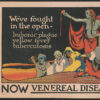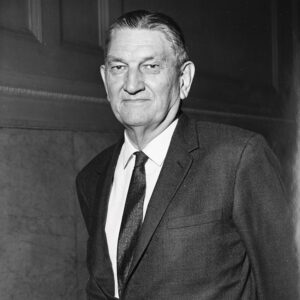calsfoundation@cals.org
Polio
The poliovirus terrorized the United States for many years, and Arkansas was no exception. Infection with the virus either went unnoticed or caused poliomyelitis, commonly called polio, which resulted in paralysis that sometimes ended in death but more often left its victims permanently handicapped. As the disease often affected children, it was also called infantile paralysis.
While the large urban centers of the country dealt with polio epidemics early in the twentieth century, Arkansas had only a few intermittent cases. The Arkansas Gazette, however, reported frequently on the disease, keeping its readers informed of efforts to combat, cure, and curtail its devastating effects in other areas. After the first significant numbers were reported in the state, Arkansans reacted to the epidemics with fear and then action in much the same way the rest of the country had. For decades during the twentieth century, outbreaks assaulted communities across the country and the state until the Salk and Sabin vaccines made widespread immunization possible.
Although polio epidemics began to appear in the northeastern part of the United States as early as 1894 in Vermont, large-scale outbreaks did not occur in the South until the 1930s. Outbreaks in the South differed from those in the North because warmer climate did not confine polio infection to the summer season. Arkansas experienced a handful of cases in 1920, approximately fifty cases in 1927, and close to eighty in 1930. The first large-scale crisis occurred in the state in 1937 when 344 cases were reported. Sunday school classes were canceled, and parents were advised to prohibit children from visiting swimming pools, movie theaters, and skating rinks. The cities of Lonoke (Lonoke County) and Des Arc (Prairie County) prohibited any child under sixteen from appearing on the streets and barred all children from traveling more than two blocks from their homes.
The cause of the disease and how it was spread were still debated, and medical officials resorted to experimental treatments and cures out of desperation. Dr. Howard Stern of Little Rock (Pulaski County) reported that doctors at Little Rock General Hospital tried several untested injections that produced mixed results. Doctors at the hospital asked those who had recovered from the disease to donate blood for use in this experimental treatment.
President Franklin D. Roosevelt led the national crusade to find a cure. His “birthday ball” commissions raised funds locally and divided the proceeds between national research efforts and aid for local communities. During the 1937 epidemic, James H. Penick, the treasurer for the Little Rock commission, reported that aid from their fund was available only to those in the Little Rock area. Victims elsewhere were not eligible.
Arkansas began its own social programs to aid those with polio. In 1937, the Arkansas legislature established a State Welfare Department. The Crippled Children’s Division of the department staffed doctors with specialization in orthopedic problems, including those associated with polio. The agency also kept epidemiological records and worked with private doctors to extend treatment to those in need.
Adults as well as children suffered the paralytic effects of polio. In Arkansas, numerous victims from across the nation were treated at the Army-Navy Hospital in Hot Springs (Garland County) during the World War II era. The natural warm water springs provided relief from pain as well as facilitated muscular therapy and rehabilitation. The military hospital treated more adults afflicted with the disease than any other medical facility in the country during that time because of its location near the springs.
Basil O’Conner, head of the National Foundation for Infantile Paralysis, visited Little Rock to promote fundraising in 1949, a year of devastating national polio epidemics. In Arkansas, 992 cases of polio were reported, and the American Red Cross sent nurses to the state to help care for an overload of patients. St. Vincent Infirmary in Little Rock became home to numerous polio patients who received treatment in iron lungs as well as physical therapy for polio paralysis. The Crippled Children’s Division soon focused money and facilities on polio paralysis sufferers statewide.
In April 1955, the vaccine developed by Jonas Salk received endorsement for widespread use. The National Foundation provided substantial quantities of the vaccine to states, including Arkansas, for distribution to children at no cost. Equally important funds from the Arkansas State Health Department were distributed to local health departments, which were then responsible for promoting and administering the inoculations.
In Arkansas and across the country, many people chose not to receive the Salk vaccine because they feared adverse reactions or faulty vaccine production, as with the doses produced by Cutter Pharmaceuticals. The Arkansas State Health Department announced that no adverse reactions had occurred in Arkansas from vaccine manufactured by the Cutter laboratory but promised that remaining doses from that company would not be used. The chairman of the Arkansas Medical Society’s Polio Advisory Committee, E. H. Crawley, assured citizens that Arkansas’s vaccines were safe but urged doctors to destroy vials to prevent counterfeiting.
In 1959, long after the Salk vaccine had become available, the disease increased nationwide, partly due to complacency regarding immunization. Epidemiologists studied polio outbreaks in Arkansas because they thought demographic shifts within the state mirrored those of most other Southern states at the time. These researchers concluded that while incidence among whites decreased, African-American cases had increased sharply between 1956 and 1959, perhaps due to African Americans not having access to the same immunization programs available to whites.
The Journal of the Arkansas Medical Society noted that the number of infected people decreased from 222 in 1956 to thirty-three in 1958. In that same year, the Sabin oral vaccine became available, and over half of all the counties in Arkansas implemented new immunization programs that again reduced polio rates. The Journal stated that only four cases were reported in 1963.
By the mid-1960s, many in the United States believed polio was conquered. Arkansas Acts 244 of 1967 and 633 of 1973 had required immunizations for children before they entered school, and the Arkansas Department of Education pledged to strictly abide by the legislation.
In an effort to combat public complacency toward immunization, Betty Bumpers, first lady of Arkansas, led an initiative aptly named the Immunization Project, which sought to immunize over 225,000 schoolchildren against polio and other common diseases within a six-year period. The Immunization Project received national acclaim and became a model for other states.
Even though nationwide immunization prevented polio from infecting on the scale it once did, survivors who had recovered in varying degrees experienced a resurgence of health problems. The Arkansas League of Polio Survivors (ALPS) was formed in the 1980s to help people gain answers to health questions and seek medical treatment for their symptoms. At the time, those afflicted had to leave the state for medical treatment because no one in Arkansas had yet studied the after-effects of the disease. Although ALPS dissolved in the late 1990s, a new group called Central Arkansas Polio Survivors (CAPS) formed with the same goals and remains in existence.
For additional information:
Annual Report of State Department on Public Welfare, July 1, 1949–June 30, 1950. Little Rock: Arkansas Department of Public Welfare Division of Research and Statistics, 1950.
Cron, Frederick W. “Hot Springs’ Military Hospital: The Army and Navy Opened One Hundred Years Ago.” The Record 28 (1987): 83–91.
Farrington, Philip H. “Immunization Activities.” Journal of the Arkansas Medical Society 70 (December 1973): 250–251.
Herndon, Sylvia, ed. Surviving It All: The Polio Story. Little Rock: Arkansas League of Polio Survivors, 1991.
Marine, William, A. M. Washburn, Clifton R. Gravelle, and Tom D. Y. Chin. “Epidemiology of Poliomyelitis in Arkansas—1959.” Southern Medical Journal 54 (September 1961): 962–968.
Oshinsky, David. Polio: An American Story. New York: Oxford University Press, 2005.
Paul, John R. History of Poliomyelitis. New Haven: Yale University Press, 1971.
“Public Health at a Glance: Poliomyelitis.” Journal of theArkansasMedical Society 60 (April 1964): 425–426.
Sass, Edmund J., ed. Polio’s Legacy: An Oral History. Lanham, MD: University Press of America, Inc., 2006.
Stern, Howard. “A Brief Resume of the 1937 Epidemic of Poliomyelitis in Little Rock, Arkansas, and Vicinity.” Journal of the Arkansas Medical Society 37 (March 1941): 210–213.
Trussell, Patricia. Arkansas Nurse Stories. Conway, AR: River Road Press, 1993.
Brenda J. Murray
Russellville, Arkansas
 Public Health
Public Health James H. Penick
James H. Penick  Betty Sorensen with Polio Patient
Betty Sorensen with Polio Patient 




Comments
No comments on this entry yet.